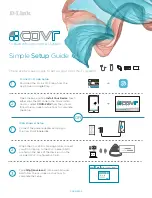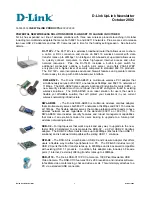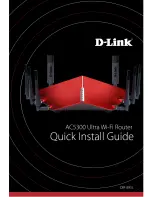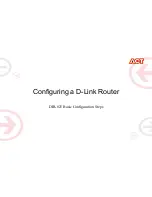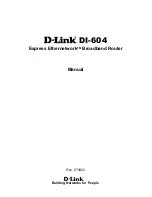
Wireless Access Point
User Guide
7.5
WMM settings
7.5.1
Overview
802.11 networks offer wireless access services based on the Carrier Sense Multiple Access
with Collision Avoidance (CSMA/CA) channel competition mechanism, which allows all
wireless devices to fairly compete for channels. All the services implemented over WiFi
networks share the same channel competition parameters. Nevertheless, different services
usually have different requirements for bandwidth, delay, and jitter. This requires wireless
networks to offer accessibility based on the services implemented over the networks.
WMM is a wireless QoS protocol used to ensure that packets with high priorities are
transmitted first. This ensures better experience of voice and video service over WiFi
networks.
WMM involves the following terms:
−
Enhanced Distributed Channel Access (EDCA): It is a channel competition mechanism
to ensure that packets with higher priorities are assigned more bandwidth and
transmitted earlier.
−
Access Category (AC): The WMM mechanism divides WLAN traffic by priority in
descending order into the AC-VO (voice stream), AC-VI (video stream), AC-BE (best
effort), and AC-BK (background) access categories. The access categories use queues
with different priorities to send packets. The WMM mechanism ensures that packets
in queues with higher priorities have more opportunities to access channels.
According to the 802.11 protocol family, all devices listen on a channel before using the
channel to send data. If the channel stays idle for or longer than a specified period, the
devices wait a random backoff period within the contention window. The device whose
backoff period expires first can use the channel. The 802.11 protocol family applies the same
backoff period and contention window to all devices across a network to ensure that the
devices have the same channel contention opportunity.
EDCA Parameters
WMM changes the contention mechanism of 802.11 networks by dividing packets into four
ACs, among which the ACs with higher priorities have more opportunities to access channels.
The ACs help achieve different service levels.
WMM assigns each AC a set of EDCA parameters for channel contention, including:
−
Arbitration Inter Frame Spacing Number (AIFSN): Different from the fixed distributed
inter-frame spacing (DIFS) specified in the 802.11 protocol family, AIFSN varies across
ACs. A greater AIFSN indicates a longer backoff period. See AIFS in the following
figure.
−
Contention window minimum (CWmin) and contention window maximum (CWmax)
specify the average backoff period. The period increases along with these two values.
See the backoff slots in the following figure.
−
Transmission Opportunity (TXOP): It specifies the maximum channel use duration
after successful channel contention. The duration increases along with this value. The
73
Summary of Contents for AP345
Page 1: ...User Guide 11AC Dual Band Ceiling Access Point AP345...
Page 58: ...Wireless Access Point User Guide Select Ethernet and click Next Select Group and click Add 51...
Page 63: ...Wireless Access Point User Guide Click Add Click Manually create a network profile 56...
Page 124: ...Wireless Access Point User Guide 3 Click Details 117...

































